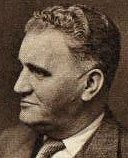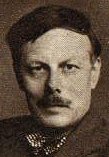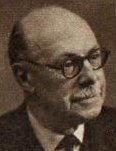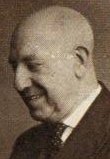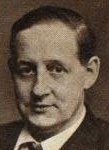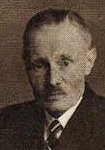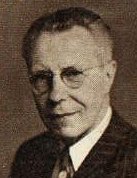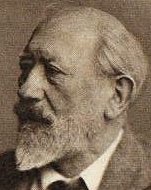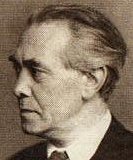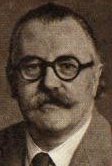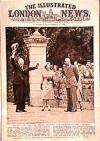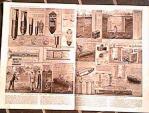| bc | The Illustrated London News, an
affectionate review of the 20th Century's greatest
picture history resource.
Back in the late 1950s as a child, I remember borrowing copies of the ILN from Bankstown library (NSW, Australia). The brilliant reproduction, large pages and occasional colour put it light years ahead of locally published magazines and imports from America. Each issue was carefully mounted in cardboard covers by the library staff and it was rare to find more than a few copies in the magazine rack at any one time. The occasional commemorative issues were eagerly sought after and it was rare to find them on display. A decade later when I began to do the rounds of Sydney's bookshops, the best place to pick up secondhand copies was Tyrrell's Bookshop, then located in George Street, Sydney about 5 minutes walk from the wharves of Circular Quay. Stan Nichol's bookshop in Crane Place was only a couple of hundred yards distant. Goldfields House now takes up most of the ground space in this part of Sydney. Tyrrell's were at that time the biggest and best secondhand bookshop in the city. The building housed double frontages on the ground and upper floor, and a tiny basement where Mr Tyrrell himself could often be spotted. Magazines were to be found at ground level in the right hand part of the shop. One would usually find a couple of piles of the ILN, generally priced at between 1/6 to 2/- (15c to 20c) each. It was usual to find issues without the covers and advertising at the lower rate. Here are some of the popular contributors to the ILN during the mid-1950s.
+ Neave Parker (ex-RAF) died May 16th,
1961, at the age of only 51 (obit. May 27th, 1961). A
children's book illustrator, his work can be seen at the
Natural History Museum.
Cyril Falls’ ‘A Window on the World’
concerns ‘France and her Allies’; General de
Gaulle had recently taken on the French presidency, at
that time a popular vote for France and her colonies. The
next photo spread continues with Eisenhower’s visit,
this time through Europe. The photo section at this point
in the ILN was headed ‘A Window on the World’.
The latter page was sub-numbered ‘1’, each
following page in Roman numerals - II, III and so on. It
was these photo collections which often contained gems of
information and illustration. Page ‘II’
featured the following: One of many reasons for my love of the ILN in the 1950s was its excellent coverage of transport. The latest aircraft, newest automobile, biggest ship plus every disaster befalling transport was grist for the mill. So on sub-page ‘III’ are photos of a US research balloon ‘which can be launched from a rocket’, a series of photos - Torrance, California. ‘The first vertical take-off with transition in mid-air to high-speed horizontal flight: The US Army B16 …’; Saraha, Africa. ‘The wreckage of a bomber which crashed in 1943: the remains of the B-24 bomber “Lady be Good” …’ Also on this page, the all-women expedition ready to attempt the 26,867ft Cho Oyu in Nepal and a US paratroop patrol in Laos. The ILN was famous for its coverage of archaeological subjects. This issue’s topic, by Dr H D Sankalia, was ‘Four-thousand-year-old links between Iran and Central India: New excavations at Navda Toli.’ The ILN also championed the cause of preservation long before the subject was fashionable. This included animal and bird life as well as early buildings and historical landmarks. Even cigarette smoking was frowned upon it seems, as I recall seeing the results of a smoking-cancer link in a late 1940s issue, which may explain why manufacturers of this product weren’t as prominent within the ILN advertising pages as they were in other publications during the 1950s. The centre pages occasionally contained colour spreads or b/w ‘cutaways’ (sectionalised drawings as seen in the pages of MODERN WONDERS or EAGLE comics) though this issue features the continuation of the Eisenhower tour. Thousands cheered the US president as he was driven through London. Can you imagine this happening nowadays? Frank Davis’s ‘A Page for Collectors’ subject is ‘Portraits in the British Museum’. Though prices weren’t always mentioned in this column, my ‘tour’ through a decade of issues revealed that anyone with money to spend on famous artworks would have cleaned up. Objects generally regarded as ‘priceless today’ ( perhaps unsold for 20 years or more and now valued at $10 million-plus) rarely sold for more than 5,000 pounds in the 1950s. The ILN occasionally featured such objects if they sold at auction for 2000 pounds and up; the cost of a mid-size luxury car in those days. Accompanying this column is a picture spread ‘"Work in Progress" exhibition in Edinburgh: studies for paintings.’ Each issue featured a full-page review of a book. In this issue ‘The Nelson touch’ is ‘An appreciation by Sir Charles Petrie’ of “Trafalgar” by Oliver Warner.
‘Smaller and smaller: the new transistor sets at the radio show’ features photos of the latest in this field and is, again, a fascinating look at how things have changed. The ILN featured this show each year. It also ran features on the Model Engineering Show, the Home Show and others, through which it’s possible to take a mind snapshot of the history of everyday life in England. Maurice Burton’s ‘The World of Science’ was another staple ILN column. This issue it’s ‘Spell-binding Stoats’ and you can discover the pleasures and otherwise of domesticating these cute critters. ‘Personalities of the Week: People in the Public Eye’ was another regular page. Although members of the aristocracy took up a lot of space early in the century they were rapidly giving way to sporting, stage and movie personalities by the 1950s. The sacked Capt James Armstrong of the liner ‘Britannic’; Professor Lighthill, new director of RAE Farnborough; Neale Fraser, new Wimbledon champion; Alfredo Camarero, cross-channel swim winner and Miss Sheila Vaughan, winner of the Girls’ Golf Championship find themselves in this issue. The following double page of photos ‘of other items’ includes a ‘magic box which produces its own electricity from chemically generated heat: the amazing new fuel cell seen with its inventor, Mr Bacon’. What ever happened to him? Edwards Hyams’ ‘In an English Garden’ was probably one of the most popular regular columns. It still makes great reading. All ILN columnists were fine writers, great ‘wordsmiths’, who could make the most mundane and ordinary subject leap into life before your eyes. Princess Alexandra was touring Queensland during August so a photo spread follows. Though you may not be interested in the subject, the photos often show other interesting people and subjects of the era. J C Trewin’s ‘The World of the Theatre’ is next. The featured play is ‘The Sound of Murder’ which should be of interest to all CB&M folk. The principle character is A WRITER OF CHILDREN’S BOOKS ‘who appears to fancy that he is a compound of Shakespeare and Milton’! It starred Peter Cushing. Yet another photo page ‘The old and the new: anniversaries, inventions, and echoes of the past’. The most interesting photo is captioned ’84 yo Mr Jack Miller riding the special bicycle which Blondin rode across Niagara Falls on a tight rope 100 years ago. The barrow was also used by Blondin. Both were found in Mr Miller's antique shop.' Towards the end of the 1950s, the ads, formerly limited to the outside pages, began to regrettably move inside. I’ve many issues free of ads (they'd had the outside pages removed) but around this time there was ‘ad creep’. Past the four colour pages of ads is Alan Dent’s ‘The World of the Cinema’, this issue subheaded ‘Half-asleep and wide-awake’. Alan’s one pet hate was Elvis! This issue his ‘critic's choice’ was Peter Sellers for his performance in ‘I’m all right, Jack’, a ‘quite entrancing study’.
Finally, ‘A literary lounger’ by E D O’Brien contains reviews of a dozen books. These are ‘Wellingtonian Studies’ by Michael Howard, ‘No Room in the Ark’ by Alan Moorehead, ‘Doctor from Lhasa’ by T Lobsang Rampa, ‘Tempo Di Roma’ by Alexis Curvers, ‘Spearhead in Malaya’ by J W G Moran, ‘The Run for home’ by L F Cooley, ‘The Breaking Point’ by Daphne du Maurier, ‘Beat on a Damask Drum’ by Troy Kennedy, ‘A Long Way Down’ by Elizabeth Fenwick, ‘The Flight of the Small World’ by Eiloart and Elstob, ‘The Brewing Industry in England’ by Peter Mathias and ‘Squadron Histories’ by Peter Lewis. (‘A literary lounger’ had recently replaced the much better organised 'Notes for the novel reader' and 'Books of the day'.) Some months earlier there had been a printers’ strike and for the first time in its history, the ILN had been unable to publish, for two months. But that’s another story! # A Christmas Hamper of
Books for Children THIS week it is the turn of the "girls" and the -"kiddiewinks" -the dear little innocent-eyed" younger children" whose singular powers, both of voice and destruction, have never ceased to astound me! Nevertheless, it is true that they are also capable of being quietly enchanted by stories, either read aloud to them, or painfully spelled out for themselves-and thus of enchanting, in turn, those in whose breasts they had so recently aroused a strong desire to commit mayhem! But the " girls " are older, and must have first turn. I notice two remarkable gaps in the selection of books for girls which has come my way this year: no school stories, and very little about pony clubs. Am I never to know the answer to the epic question once, I believe, asked by Mr. Arthur Marshall: " Who has stolen Prudence's bejewelled hair-slide?" And am I never again to see, worked out in prose, the theme of Mr. John Betjeman's exquisite poem beginning: It's aw'flly bad luck on Diana, There is, indeed, one first-class book by Dorian Williams called EVERY CHILD'S BOOK OF RIDING (Burke; 15s.), simple enough for a child with a first pony, and with all that such a child should know about grooming, feeding, tack, etc., but also most useful for older riders who have reached the gymkhana or even showjumping stage. Congratulations once more to Ernest Benn and his associates who have reprinted two more books by E. Nesbit, THE WONDERFUL GARDEN and THE MAGIC WORLD (12s. 6d. each). Two stories bring back some old friends. TROUBLE IN PARADISE (Max Parrish; 9s. 6d.), by Sir John Smyth, V.C., will be eagerly sought by those who remember his "Paradise Island" last year. It is the same island with some of the same characters, including, of course, Ann Sheldon, the girl who is both the narrator and the heroine of some remarkable adventures with thieves and smugglers. She writes-and this is very rare-just as a girl of thirteen or so would write in real life. Then there is another " Gappy" book by Elisabeth Beresford, GAPPY GOES WEST (Max Parrish; 9s. 6d.). The children here use words like "sloppy", " beastly," which is not, I would say, quite up to the usual form of the worldweary infants of today, but their adventures on a Caribbean island are both exciting and mystifying. THE SILVER PENCIL (Collins; 10s. 6d.), by Patricia Ward, is one of those semi-mystical books which may or may not be held to have "come off," according to the reader's subjective reactions. Anna on holiday at the Welsh coast finds an old silver pencil, which turns out to have belonged to her great-grandfather. It has "planchette" conversations with her, and finally disappears. There is much good incident in the book, but a fairly thick icing of morality -" kindness," and "courage," and other such unimpeachable virtues-which are much better actively illustrated than talked about. I picked up DRINA DANCES IN EXILE (Hodder and Stoughton; 10s. 6d.), by Jean Estoril, with some reluctance, because I seem to remember not having got on very well with Drina's capers last year, and also because entrechats and fouettes (if that is right), convey little meaning to me. But this year Drina did not dance, so far as I am concerned, entirely in vain. Her exile, it is true, was only to the Chilterns-and a pretty fuss she made about it !-but 1 enjoyed the story, and the characterisation seemed to me to be good. Now we turn to the "kiddiewinks." Their books are, on the whole, more imaginatively contrived than those produced for their elders-by-afew-years. These books fall easily into two groups: "fat," ones, with full-length stories, and "thin" ones, with little or no letterpress, and plenty of pictures. Of the fat ones, I thought that THE SPETTECAKE HOLIDAY (Michael Joseph; 12s. 6d.), by Edith Unnerstad, was probably the best. It has been admirably translated from the Swedish by L. Seaton. The hero is a small boy who becomes very naughty while his mother is ill, so he is sent off to the country to stay with his grandmother. There are various specifically Swedish "props" in this pleasant little comedy-such as an elk, and the spettecakes themselves-but no English child could fail to feel instantly at home in the Stubbagarden farm. More old favourites turn up in this group. I greatly preferred MORE ABOUT PADDINGTON (Collins; 8s. 6d.), by Michael Bond, to THE KINGDOM OF CARBONEL (Max Parrish; 10s. 6d.), by Barbara Sleigh, partly because I understand bears, while cats (with the exception of Simpkin, in the Tailor of Gloucester, and some others) make me faintly uneasy; partly because I believe firmly in Paddington, while the author never quite succeeds in making me believe in Carbonel and his Royal family. Margery Sharp's first book for children, THE RESCUERS (Collins; 8s. 6d.), is about three mice who rescue a poet from a castle dungeon. It is enchanting, and the drawings by Judith Brook are just right. I hope that Miss Sharp gives us more and more mice every year. Now I come to the "thin" books. Some of these, too, are "perennials." ETHELBERT AND THE WITCH DOCTOR (Collins; 10s. 6d.)-a large and fragrant bouquet to Miss Rosemary Holland for christening a tiger " Ethelbert " !-will charm the youngest children as well as the oldest adult. Many of them will also appreciate ELOISE AT CHRISTMASTIME (Max Reinhardt; 12s. 6d.), a good. deal more than I did. Eloise is not really the girl for my money, in spite of Hilary Knight's lively and fanciful illustrations. Tintin, as all his fans will know, is an intrepid reporter " and this year he and his companions go looking for pirate treasure in the strip cartoon technique adopted by their creator, Herge, who presents us with RED RACKHAM'S TREASURE (Methuen; 8s. 6d.). Poetry for children is always difficult to assess; it can only be tried out, as it were, on the dog itself! That is why I cannot make up my mind about NEW FEATHERS FOR THE OLD GOOSE (Routledge and Kegan Paul; 12s. 6d.), by John Becker, illustrated by Virginia Campbell. Some of the poems have an inconsequence which seems to me to be the genuine article, and it has been a good idea to suggest music for others. THE VERY LITTLE GIRL (Windmill Press; 9s. 6d.), by Phyllis Krasiloysky, is one of those books which only contain about a dozen sentences, trailing over a dozen pages with pictures on each. There must be "very little girls" all over the country who will enjoy being reminded of the fact that they are little, and that in time they will grow bigger-for that is all that the book has to tell them! Freud, if I remember rightly, had a good deal of a rather sinister nature to say about shoes, but since I don't believe a word of it I am quite prepared to recommend THE SHOES FIT FOR A KING (The World's Work; 12s. 6d.), by Helen E. Bill, with pictures by Louis Slobodkin. You will not be surprised to hear that the shoes got their king in the end though not before they had made a pretty mess of his palace! Finally, we entertain a couple of foreigners. THE FABLES OF LA FONTAINE (Macdonald; 8s. 6d.) are, we are assured in the blurb, " no less instructive than they are amusing, for they bring home the lessons of thrift, patience and modesty". Both the translation, by Marie Ponsot, and the illustrations, by Simone Baudouin, are good. "Lavish" is, 1 think, the word for CHINESE FAIRY TALES (W. H. Allen; 128. 6d.), retold by Shirley Goulden and illustrated by Maraja. There are the requisite number of princes, dragons and witches-and I notice that where the Nordics favour poor woodcutters, the Chinese prefer poor fishermen. Other Books for Children. GIRLS. YOUNG CHILDREN. TYRRELL'S
BOOKSHOP Any problems or questions? Email John Back to Collecting Books & Magazines main index. Note: ILN or ILS? Due to a 'mental aberation' or perhaps approaching senility :), when I first established this page, I used ILS rather than ILN, for the address as well as within. I believe all the ILS's have been changed to ILN's, but it was too much trouble to change the page address due to links elsewhere. If you come across any I've missed, please email me at the above address. |
bc |

